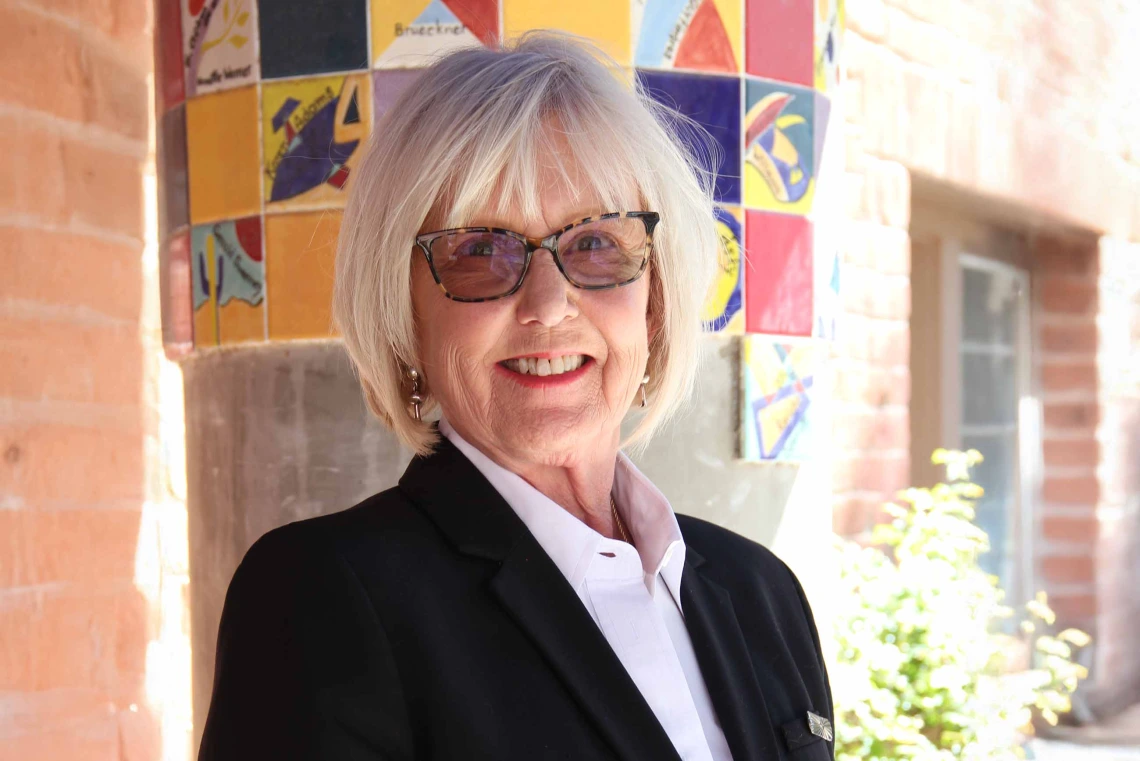Building a research database to protect tribal trust
Claudia Nelson guided the creation of a public-facing research database, increasing transparency between U of A researchers and Arizona’s native tribes.

Claudia Nelson is director of the Native Peoples Technical Assistance Office in the University of Arizona Office of Research and Partnerships.
As director of the Native Peoples Technical Assistance Office, Claudia Nelson has spent nearly three decades preserving research proposals, letters, tribal council resolutions and grant records – evidence of a longstanding commitment to Arizona’s Indigenous communities.
“We have an ethical obligation to be transparent with the tribes,” she said. “This is not about research compliance; It is about the basic promise of respect.”
Through the years, Nelson envisioned and helped create a comprehensive, public-facing portal that tracks research projects involving Native Nations and the U of A. The Native American Advancement, Initiatives and Research database, launched in 2020, includes around 500 tribal research projects and more than $250 million in open grants.
The public database traces its roots back to Nelson’s decades of dedicated, behind-the-scenes work in university research systems. Nelson, a former paralegal, was hired in 1992 by Regents Professor Robert A. Williams Jr., E. Thomas Sullivan professor of law, faculty co-chair of the U of A Indigenous Peoples Law and Policy Program and member of the Lumbee Tribe of North Carolina, to assist with human rights work at the university’s Office of Indian Programs.
She began her work reviewing research and engagement with Native Nations under the mentorship of then-coordinator Gordon Krutz, who understood the importance of building respectful relationships with tribal communities. Nelson built on Krutz’s data-collection processes and informally oversaw tribal research proposal review and data tracking after Krutz’s retirement. Back then, Nelson had no formal title and no significant institutional authority, but she stayed committed to maintaining the records.
“I realized that if I didn’t pick up the pen and start keeping our record processes in place, it would have gone away completely. I wanted to make sure it was not lost,” she said.
The Office of Indian Programs then became the AIS Office of Community Development in the 1990s and eventually the Native Peoples Technical Assistance Office in 2005, where Nelson now serves as director.
Over the years, Nelson continued tracking tribal engagement informally, driven by what she calls “a sense of ethical responsibility” rather than policy. She always believed the data could one day be used for something greater.
In 2016, the Arizona Board of Regents adopted Policy 1-118, requiring the U of A, Arizona State University and Northern Arizona University to consult with tribes before initiating research that would affect a sovereign tribe. Building on this mandate, Williams secured funding from the U of A Agnes Nelms Haury Program to create what he had envisioned as a “one-stop shop for all things Native on the University of Arizona campus.” Nelson worked in an advisory role alongside Kelly Smith, data science expert and research associate in the Native Peoples Technical Assistance Office, and IT specialist Vishal Gaikwad of the Indigenous Peoples Law and Policy Program, to design and develop the Native American Advancement, Initiatives and Research web portal and digital database.
“For a long time, I’d been wanting to create a more outward-facing database, rather than having the university keep this information internal, the biggest reason being transparency to the tribes,” Nelson said.
Nelson’s decades of meticulous record-keeping provided an essential foundation that made the creation of the database possible. The result was a living, growing, historical archive of the university’s research partnerships with Arizona’s tribes.
Much of the current research in Native Nations communities focuses on improving health, education and environmental issues – areas prioritized by tribes to address urgent local needs and support long-term community well-being.
In the database, each project listing includes details about faculty collaborators, funding sources and tribal affiliations. It enables tribes to see which researchers are working with their communities, helps students find mentors and improves research partnerships between the University and Indigenous communities. According to Nelson, researcher transparency is vital to tribal communities, and now, they can see exactly what’s happening through the Native American Advancement, Initiatives and Research portal.
“If you are going to approach a tribe with research opportunities, you have got to make sure you understand that these benefits go to them and also disclose the benefits that are coming to you,” she said.
She also wanted the system to recognize the complexity of Indigenous governance. Many tribes have their own, unique Institutional Review Boards or research laws, so the database includes links to each tribe’s policies and contact protocols, which must be upheld.
Behind every database design choice is Nelson’s lifetime of trust-building and pivotal experiences: preparing an Apache-English dictionary compiled in the 1990s and returning it to the San Carlos Apache community; providing legal support on human rights issues for the Hia-Ced O’odham who were seeking tribal recognition; learning from past researchers’ missteps with native communities; and reviewing research proposals long before such work was formally required. Today, she continues to personally train faculty and students on how to ethically and respectfully navigate research partnerships with tribal nations.
The database draws hundreds of visits per month. Tribal partners, students and administrators use it to navigate the complex web of sovereignty, consent, knowledge sharing and production. For Nelson, whose name does not appear directly on the database, that’s the end goal.
“The data belongs to the tribes,” she said. “I just helped make sure we could keep our promises.”

